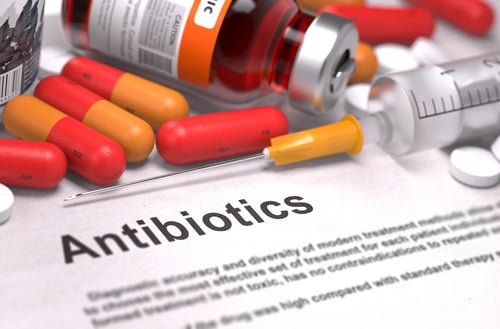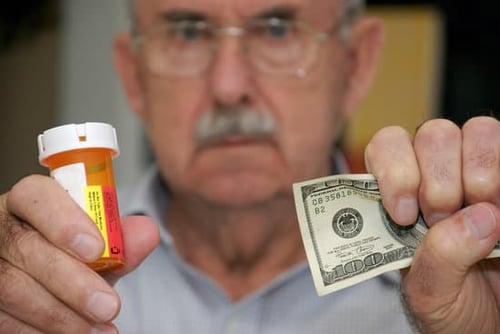

U.S. Drug Shortages Near an All-Time High, Scarcity of Cancer Drugs
Drug shortages in the U.S. healthcare systems are approaching an all-time high with an alarming scarcity of drugs to treat cancer patients.
“Thousands of patients are facing delays in getting treatments for cancer and other life-threatening diseases, with drug shortages in the United States approaching record levels,” reported Chrstina Jewett for the New York Times in May. “Hospitals are scouring shelves for supplies of a drug that reverses lead poisoning and for a sterile fluid needed to stop the heart for bypass surgery. Some antibiotics are still scarce following the winter flu season when doctors and patients frantically chased medicines for ailments like strep throat. Even children’s Tylenol was hard to find.”
The U.S. Food & Drug Administration (FDA) currently lists nearly 150 drugs in shortage.
“Drug Shortages can occur for many reasons, including manufacturing and quality problems, delays, and discontinuations. Manufacturers provide FDA with most drug shortage information, and the agency works closely with them to prevent or reduce the impact of shortages,” says the FDA.
A Shortage of Cancer Drugs Called a Public Health Emergency
The American Cancer Society said in May that chemotherapy drugs used to treat cancer are increasingly in short supply and have returned to the list of top-five drug classes affected by the shortage.
“The shortage of certain cancer drugs has become a serious and life-threatening issue for cancer patients across the country,” said a statement from American Cancer Society and American Cancer Society Cancer Action Network CEO Karen E. Knudsen. “A number of the drugs included in the shortage don’t have an effective alternative. As first-line treatments for a number of cancers, including triple-negative breast cancer, ovarian cancer, and leukemia often experienced by pediatric cancer patients, the shortage could lead to delays in treatment that could result in worse outcomes.”
The American Cancer Society attributed the cancer drug shortage to the following:
- Expanded demand.
- Supply shortages.
- Limited manufacturing capacity.
- Low-profit margins for generic therapies.
FDA Considers Importing Drugs from Unapproved Companies
On June 2, 2023, CNBC reported that the FDA is considering temporary cancer drug imports from unapproved companies to ease U.S. shortages.
“This is, in my opinion, a public health emergency,” Dr. Amanda Fader, a professor at the Johns Hopkins School of Medicine and a president-elect of the Society of Gynecologic Oncology, told the New York Times, “Because of the breadth of the individuals it affects and the number of chemotherapy agents that are in shortage right now.”
The American Society of Clinical Oncology anticipates the shortages will continue through June but then subside particularly if the FDA lifts import restrictions, according to Dr. Julie Gralow, that group’s chief medical officer, via CNBC.
Two cancer drugs mentioned in the reports that are in short supply are cisplatin and carboplatin.
Philip Schwieterman, director of oncology and infusion services at the University of Kentucky health system, told CNBC, “If I go in the grocery store and I want a kiwi, there are usually kiwis there. It boggles my mind that if I want some cisplatin, I can’t get cisplatin even though it saves lives.”
All told, some 14 drugs used for chemotherapy are in shortage, according to the FDA via KRHD.
A group of U.S. legislators from Michigan wrote to the FDA in May: “We are deeply concerned with the worsening shortages of chemotherapy drugs, including cisplatin and carboplatin, and urge the Food and Drug Administration to do everything in its power to alleviate the strain on patients and prevent delays in life-saving treatments.
“Cisplatin and carboplatin, two critical chemotherapy agents used to treat a wide range of cancers, have been on FDA’s shortage list since February and April of this year. At least 50,000 Americans rely on cisplatin as part of their chemotherapy treatments, as the product is used in approximately 10 to 20 percent of chemotherapeutic regimens.”
Report Calls Continued Shortages a National Security Risk
U.S. Senator Gary Peters (D-MI), Chairman of the Senate Homeland Security and Governmental Affairs Committee, released a report in March that found the continued shortages of medications to be a significant health and national security risk.
“While some shortages may only be an inconvenience, others can have devastating impacts on patient care,” said Peters. “There are a number of factors that contribute to drug shortages, including economic drivers that lead to a lack of manufacturers willing to enter or remain in the market or invest in quality manufacturing systems, insufficient visibility into the entire supply chain for critical medications, and an overreliance on foreign and geographically concentrated sources for the materials needed to make these drugs.”
The report’s key findings included:
- Drug shortages are increasing, lasting longer, and impacting patient care.
- Overreliance on foreign and geographically concentrated sources for critical drugs and their key materials, and limited domestic manufacturing capabilities create health and national security risks.
- The FDA still lacks critical information that could help mitigate shortages.
- Industry and the federal government lack end-to-end visibility into the pharmaceutical supply chain and efforts to map supply chains are not sufficiently coordinated.
The report’s key recommendations included:
- Invest in domestic advanced manufacturing capabilities for critical generic drug products regularly in shortage.
- Conduct regular interagency medical supply chain risk assessments.
- Require manufacturers of life-supporting and life-sustaining drug products to report increased demand and export restrictions to the FDA.
- The FDA should take steps to ensure its supply chain data can be used to monitor supply chain vulnerabilities and conduct predictive modeling.
FDA Current Drug Shortage List (as of June 2, 2023)
As of June 2, 2023, drugs listed by the FDA as currently in shortage:
- O.9 percent Sodium Chloride Irrigation
- Albuterol Sulfate Inhalation Solution, 0.5 percent
- Alprostadil (Muse) Suppository
- Amifostine Injection
- Amino Acids
- Amoxapine Tablets
- Amoxicillin Oral Powder for Suspension
- Amphetamine Aspartate; Amphetamine Sulfate; Dextroamphetamine Saccharate; Dextroamphetamine Sulfate Tablets
- Atropine Sulfate Injection
- Azacitidine for Injection
- Azithromycin (Azasite) Ophthalmic Solution 1 percent
- Bacteriostatic Water for Injection
- Belatacept (Nulojix) Lyophilized Powder for Injection
- Belladonna and Opium Suppositories
- Bumetanide Injection
- Bupivacaine Hydrochloride and Epinephrine Injection
- Bupivacaine Hydrochloride Injection
- Calcium Gluconate Injection
- Capecitabine Tablets
- Carboplatin Injection
- Cefixime Oral Capsules
- Cefotaxime Sodium Injection
- Cefotetan Disodium Injection
- Chloramphenicol Sodium Succinate Injection
- Chloroprocaine Hydrochloride Injection
- Chlorothiazide Oral Suspension
- Cisplatin Injection
- Clindamycin Phosphate Injection
- Clonazepam Tablets
- Collagenase Ointment
- Conivaptan Hydrochloride (Vaprisol) in 5 percent Dextrose Plastic Container
- Conjugated Estrogens/Bazedoxifene (DUAVEE) Tablet, Film Coated
- Cyclopentolate Ophthalmic Solution
- Cytarabine Injection
- Dacarbazine Injection
- Desmopressin Acetate Nasal Spray
- Dexamethasone Sodium Phosphate Injection
- Dexmedetomidine Injection
- Dextrose 10 percent Injection
- Dextrose 25 percent Injection
- Dextrose 5 percent Injection
- Dextrose 50 percent Injection
- Diazepam Rectal Gel
- Diflunisal Tablets
- Difluprednate Ophthalmic Emulsion
- Digoxin Injection
- Diltiazem Hydrochloride Injection
- Dimercaprol (Bal in Oil) Injection
- Disopyramide Phosphate (Norpace) Capsules
- Dobutamine Hydrochloride Injection
- Dopamine Hydrochloride Injection
- Dulaglutide (Trulicity) Injection
- Echothiophate Iodide (Phospholine Iodide) Ophthalmic Solution
- Edetate Calcium Disodium Injection
- Enalaprilat Injection
- Epinephrine Injection, 0.1 mg/mL
- Erythromycin Ophthalmic Ointment
- Etomidate Injection
- Fentanyl Citrate (Sublimaze) Injection
- Fludarabine Phosphate Injection
- Fluorescein Injection
- Flurazepam Hydrochloride Capsules
- Furosemide Injection
- Gentamicin Sulfate Injection
- Guanfacine Hydrochloride Tablets
- Heparin Sodium and Sodium Chloride 0.9 percent Injection
- Hydrocortisone Sodium Succinate Injection
- Hydromorphone Hydrochloride Injection
- Hydroxypropyl (Lacrisert) Cellulose Ophthalmic Insert
- Ibutilide Fumarate Injection
- Indigotindisulfonate Sodium Injection
- Isoniazid Injection
- Isoniazid Tablets
- IV Fat Emulsion
- Ketamine Injection
- Ketorolac Tromethamine Injection
- Leucovorin Calcium Injection
- Lidocaine Hydrochloride (Viscous) Oral Topical Solution
- Lidocaine Hydrochloride (Xylocaine) and Dextrose Injection Solution-Premix Bags
- Lidocaine Hydrochloride (Xylocaine) Injection
- Lidocaine Hydrochloride (Xylocaine) Injection with Epinephrine
- Lorazepam Injection
- Lutetium Lu 177 Vipivotide Tetraxetan (Pluvicto) Injection
- Mannitol Injection
- Mepivacaine Hydrochloride Injection
- Methamphetamine Hydrochloride Tablets
- Methotrexate Injection
- Methyldopa Tablets
- Methylprednisolone Acetate Injection
- Metronidazole Injection
- Midazolam Injection
- Morphine Sulfate Injection
- Multi-Vitamin Infusion (Adult and Pediatric)
- Neomycin Sulfate Tablets
- Nizatidine Capsules
- Oxybutynin Chloride Syrup
- Oxytocin Injection
- Palifermin (Kepivance) Lyophilized Powder for Injection
- Pantoprazole Sodium for Injection
- Parathyroid Hormone (Natpara) Injection
- Penicillin G Benzathine Injectable Suspension
- Physostigmine Salicylate Injection
- Potassium Acetate Injection
- Potassium Chloride Concentrate Injection
- Quinapril and Hydrochlorothiazide Tablets
- Quinapril Hydrochloride Tablets
- Remifentanil Injection
- Rifampin Capsules
- Rifampin Injection
- Rifapentine Tablets
- Rocuronium Bromide Injection
- Ropivacaine Hydrochloride Injection
- Semaglutide (Ozempic) Injection
- Semaglutide (WEGOVY®) Injection
- Sincalide (Kinevac) Lyophilized Powder for Injection
- Sodium Acetate Injection
- Sodium Bicarbonate Injection
- Sodium Chloride 0.9 percent Injection Bags
- Sodium Chloride 14.6 percent Injection
- Sodium Chloride 23.4 percent Injection
- Sodium Chloride Injection, 0.9 percent Vials and Syringes
- Sodium Phosphates Injection
- Somatropin Injection
- Sterile Water for Injection
- Sterile Water for Irrigation
- Streptozocin (Zanosar) Sterile Powder
- Sucralfate Tablets
- Sufentanil Citrate Injection
- Sulfasalazine Tablets
- Technetium TC-99M Mebrofenin Injection
- Tirzepatide Injection
- Triamcinolone Acetonide Injectable Suspension
- Triamcinolone Hexacetonide Injectable Suspension
- Trimethobenzamide Hydrochloride Capsules
- Valproate Sodium Injection
- Vecuronium Bromide for Injection
Subscribe to email updates
Related Articles

Topics

Topics

Topics



